“Sin City Gets its Just Reward” was one of the newspaper headlines in 1906, after an earthquake and fire destroyed much of the city. A couple of hours after unpacking in our 1920s era flat in the port city of Oakland, across The Bay, we had jumped into the bawdy history of San Francisco. City Guides offer free walking tours given by local volunteers, and we signed up for North Beach by Night (I highly recommend the tours if you visit). As the light faded, we explored with a retired historian whose grandfather had emigrated from Italy during the Gold Rush (1846ish-1850). She talked of bars, booze, brothels, business people, beatniks and book stores; the extraordinary growth of the city in the madness of the gold rush, the famous writers, singers, entrepreneurs and hippies who lived and /or were discovered in North Beach and Little Italy. Mark Twain, Jack Kerouac, Jack Ginsberg, Barbara Streisand, Janis Joplin, Levi Strauss (who invented jeans for the gold miners), Patty Hearst’s father are some of them. A local busker stopped singing to listen and make sure she got the details right. When he learned we were from Canada, the busker played four lines of a Sloane song for us, all he knew. I thought that was worth $1, and he agreed. San Francisco may still have an ‘anything goes’ feel, but there is more of a flower-power atmosphere now. Nobody gets too upset or too uptight in San Francisco. The urgency and bustle of other large cities is muted here. Riding on public transportation, we found locals very happy to help, and they love their city. One day we took the 40- minute ferry ride across the Bay to SF, and on the commute back at about 7 pm, many passengers went straight to the bar for a beer or a glass of wine and sipped and chatted as the sun set. My kind of city.
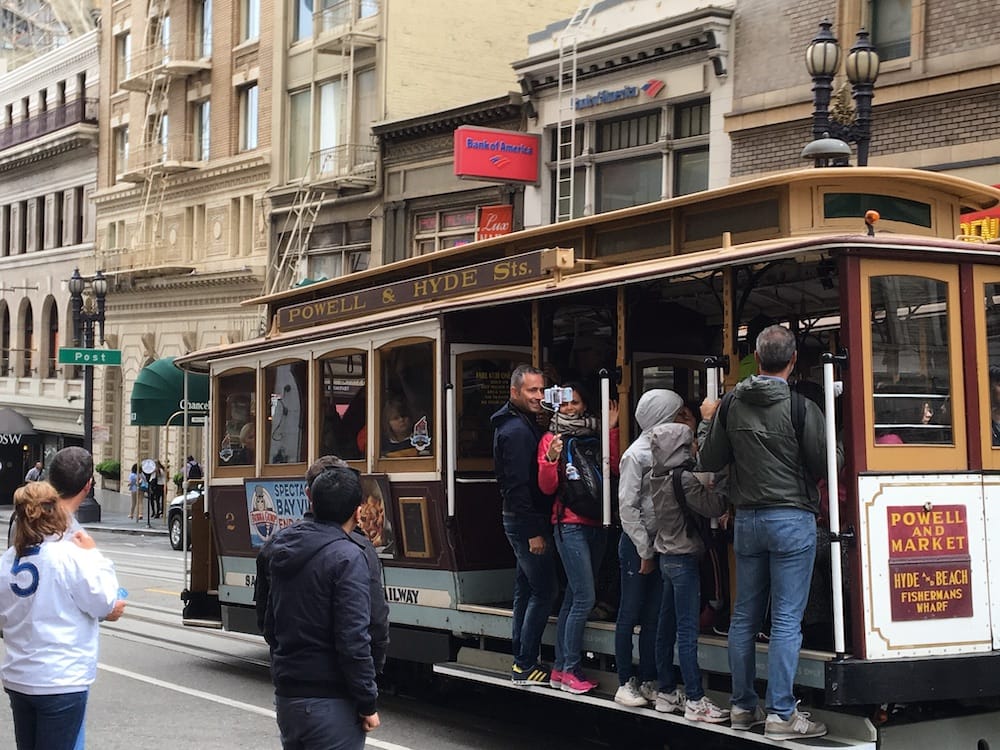
Back in North Beach with the mix of history came a muddle of smells: garlic, basil, pizza, flowers, dirt, cigarettes and weed. In Little Italy, people were eating outside at bistros and patios, or promenading, gelato in hand. There were many European tourists, and we heard more Italian than English. Walking back to the metro station, we passed a strip club, where a doorman was enticing men to go in and watch the show. We were holding hands, and the doorman told MLH he would throw in couples’ counselling for free!
There are four things I had not realized about San Francisco before visiting. First, that summer is the coldest time to visit. A retired geologist who gave a walking tour of the Golden Gate Bridge told us why. Air heats up over the inland valleys. The San Francisco Bay is like a donut with a bite taken out of it on the Pacific Ocean side. Cold ocean air rushes in to the Bay to replace the rising hot air. Result: fog. We were cold for the first two days in the city. All the other seasons are lovely, apparently.
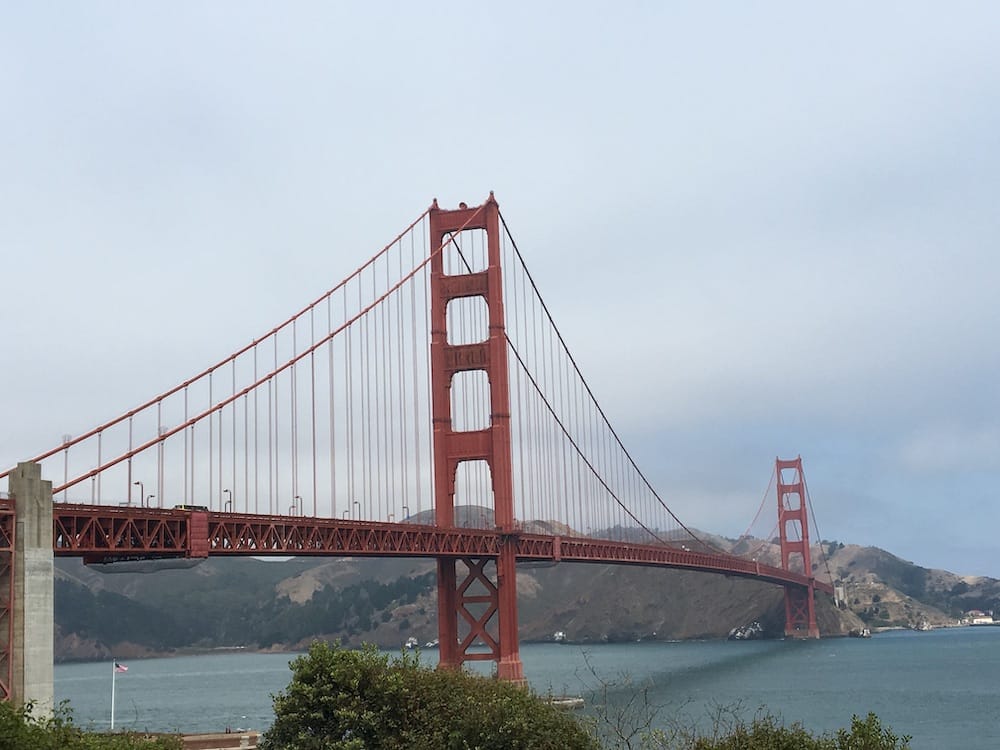

Second, the city is not built on one big hill, but many (over 40) rolling hills. This means it is very difficult to get an overview of the entire city. As we explored using trams, buses, feet and cable cars, we constantly crested a hill, expecting to see things laid out beneath us, only to find another hill presented. It’s a lot of fun to discover areas like this, though slow. On posh Nob Hill, we spotted a private lift for a beautiful estate perched on the hill. On the cable car to Chinatown, we sat about a foot away from the operator throwing the brake and engage switches as we took bets on whether the tourist with the GoPro on his head hanging off the cable car was going to lose both when we passed the descending car. In the Golden Gate Park, we visited the herd of bison and the AIDS Memorial Garden. In the Mission District, we made a pilgrimage to the famous bakery Tartine, and on behalf of Daughter #2, devoured the most delicious tarts (hazelnut chocolate and Florentine) that I have ever eaten. Walking that off, we explored the social-justice-themed murals in Balmy Alley. In Union Square, we sat in front of the gleaming glass walls of the Apple Store, while on our right someone half-heartedly offered cocaine for sale and on our left an Asian tourist in pink cat ears and matching ankle boots, recent purchases in a Louis Vuitton bag on her arm, posed for a photo in front of the rainbow-coloured Summer of Love (1967) sign.
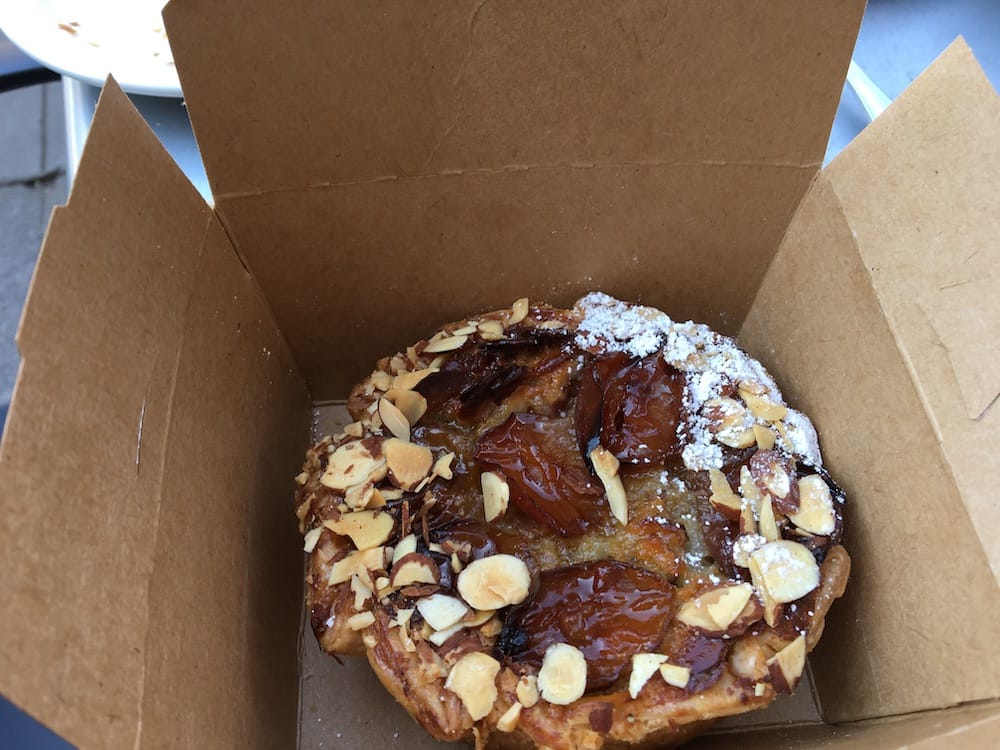

Third, the city is full of young people – very few grey hairs here. This is connected to the fourth thing – it’s outrageously expensive. The cost of living is at least 25% higher than anywhere else in the US. We could not afford to stay in downtown San Francisco, which is why we trekked to Oakland on the ferry and metro, and ate our main meal at lunchtime, when it was cheaper.
A retired Silicon Valley executive, Steve, gave us the whys of three and four. He’d been on another walking tour with us, of the beautiful 1930s buildings in downtown San Francisco. Our guide had ended our tour in a hidden gem of the city, a POPO. POPOs are privately owned, publicly open spaces. When a corporation takes over a historic property, it must provide these, but not obliged to advertise they are there. There are roof terraces, gardens, and we were in a beautiful courtyard. An aside – the interior windows and walls had fake corniches and columns painted on them; ‘trompe d’oeil’ or ‘a trick of the eye’, because they seem real at first sight. Our guide told us gleefully of a recent tourist who misheard ‘trompe d’oeil’ as ‘Trumped -oy!’ and was surprised that Trump already had an architectural style named after him….
As we drank tea in these calm surroundings, Steve explained that San Francisco has the highest number of billionaires per capita in the US, and high-tech firms such as Salesforce have their headquarters in the city. They employ large numbers of highly paid, mostly young, software engineers and IT specialists. They like to live downtown, and this has forced lower paid and older residents out to the suburbs. The average worker earns $80,000 a year but will pay $60,000 a year for a two-bedroom flat. IT workers who live outside the core get free transportation, and indeed we passed a huge, black “IT transport’ coach one evening about 9 pm, with bicycles hung off the back, the passengers hunched over their computers, the yellow haze of the overhead lights giving them halos as they squeezed out another hour of productivity.
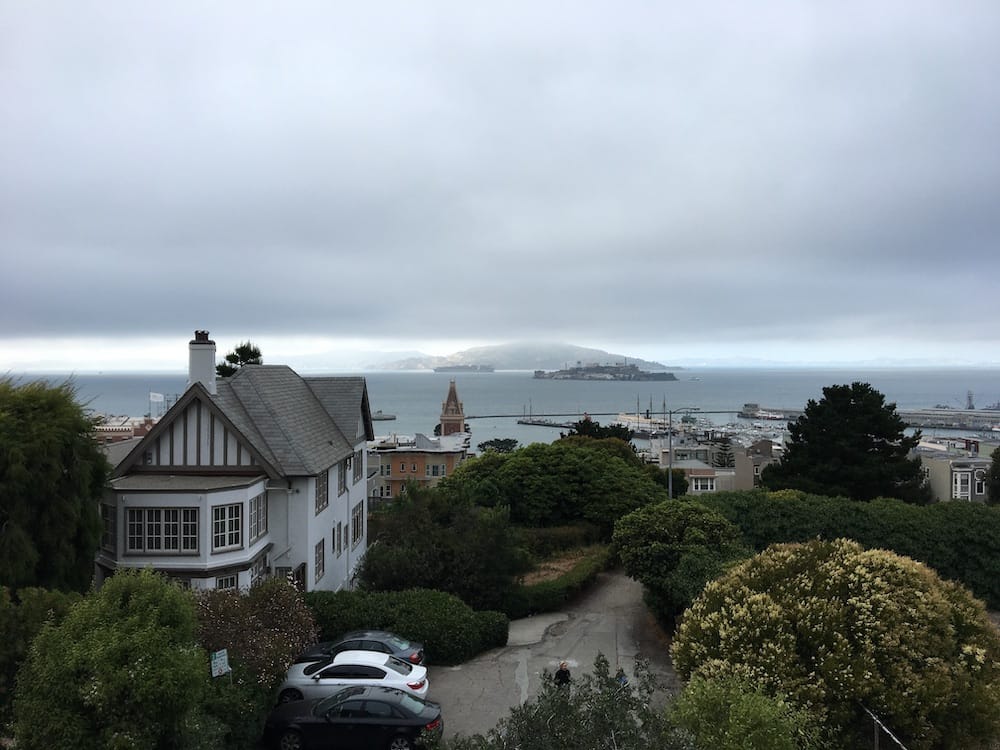
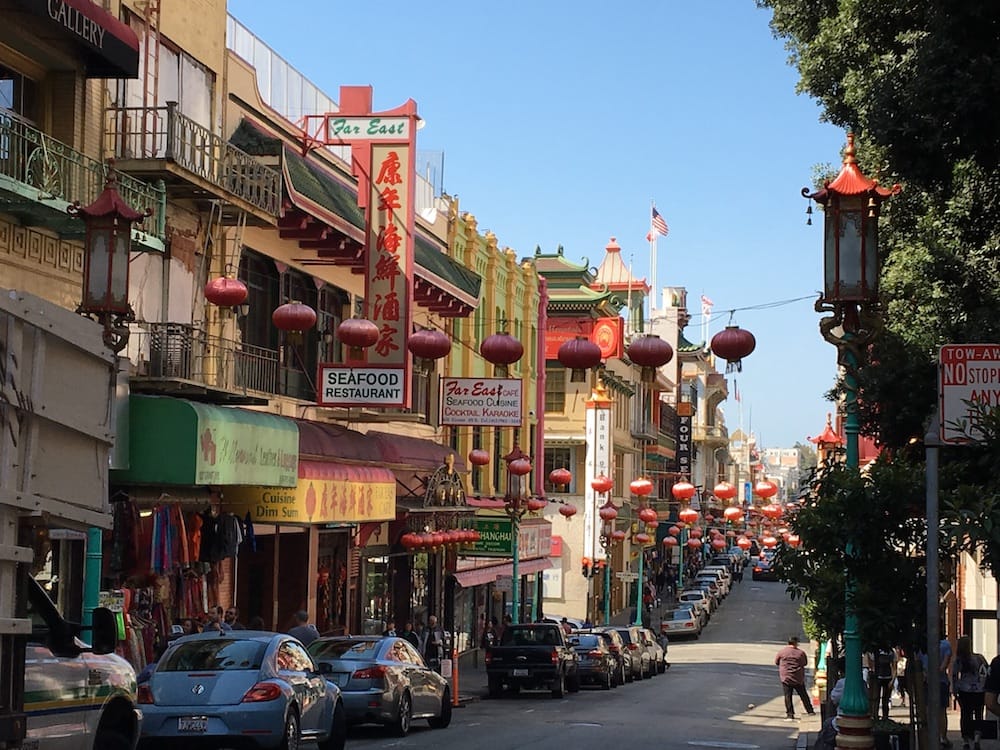
The huge skyscrapers being built by companies such as Salesforce must all be earthquake proof. The Golden Gate Bridge is being fitted with rubber and steel shock absorbers, invented by New Zealanders after the Christchurch earthquakes. We asked Steve about the ever-present earthquake and tsunami threat; what was it like, living with that? “Oh”, he said, “we get hundreds of earthquakes a year, only one or two will be big enough to feel”. Did he experience the 1989 earthquake when a section of the Bay Bridge collapsed? Yes, he had. Although a long way from the epicentre, his swimming pool was drained. Are San Franciscans ready for the next big one – with emergency kits, drills etc.? No, no one gets too het up about it. He watched the glass in his office windows wobble during a particularly long tremor a few years ago, and remembers everyone going quiet, and knowing they had the same question in their minds as he did: is this the big one? Meanwhile, all buildings can now withstand a ten earthquake. That’s in theory only because there has never been a number ten.
We had intended to drive down the Pacific Coastal Highway to Los Angeles, but mud slides had closed some of it, so instead we beetled down the I5 in six lanes of traffic, to SoCal – Southern California – out of the fog and into the sun.